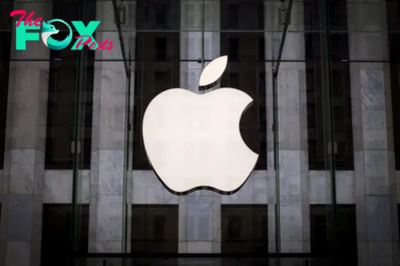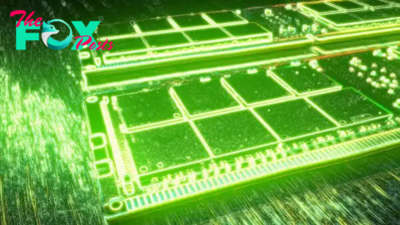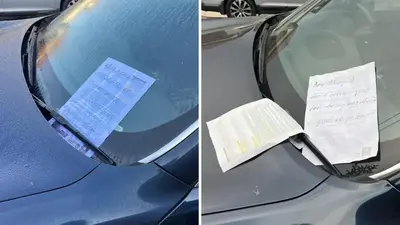Technology
Lunar eclipse and Eta Aquarids meteor shower to coincide in epic Saturday morning light show
Two space events are set to take place in the sky this weekend, coinciding in the early hours of Saturday morning.
A meteor shower will brighten the sky with the debris of Halley’s comet as the full moon is engulfed by the Earth’s shadow in a penumbral eclipse.
The Eta Aquarids meteor shower set to light up the cosmos is named after the Aquarius constellation, and made from the debris trail left by Halley’s Comet.
Watch the latest News on Channel 7 or stream for free on 7plus >>
While we only see Halley’s comet once every 76 years — it is next due for a peek in 2061 — we pass through its debris bi-annually.
As we do, the debris hits the Earth’s atmosphere and burns up brightly, creating a stunning sky show that will this year peak in the early hours of Saturday, May 6.
During its peak, another celestial event will also be visible from Australia — a penumbral eclipse.
ANU astrophysicist Dr Brad Tucker told 7NEWS.com.au the convergence of two space events, both visible without technical equipment, is a “special treat”.
The penumbral eclipse will last for just over four hours, from 1.14am AEST to 5.31am, reaching maximum coverage at 3.22am.
The meteor shower will also peak from about 3am AEST until just before sunrise.
“The lunar eclipse isn’t going to be that spectacular,” Tucker admitted, adding that is because a penumbral eclipse is less obvious than a total lunar eclipse.
But the eclipse will mean the full moon is dimmed, which is excellent news for meteor watchers as it will work to make the burning debris easier to spot.
“One of the problems we experience when the full moon is out is it makes the sky much brighter, so you lose some of those fainter meteors,” Tucker said.
“This meteor shower is from Halley’s comet, so this is bits of rock and debris and ice that has come off the comet as it goes around the sun.
“Most of the debris that the Earth will hit will be quite small, so this is one (meteor shower) that is unlikely to produce really big fireballs, but what usually happens is that the meteors are moving pretty fast.”
Because the meteors are moving fast, Tucker said that a brighter-than-usual display is likely.
“This is what most people want to see because those are the ones that are easier to spot, both with the moon, and in the city,” he said.
What is a penumbral eclipse?
It is called a “penumbral” eclipse because the moon is covered by the outer edges of the Earth’s shadow — its penumbra.
The Earth’s dark, “thicker” inner shadow is known as the umbra, and when the moon falls under that section, a total or partial lunar eclipse is produced.
A penumbra is lighter than the umbra, so it is more difficult to see as it moves across the moon’s surface. It is also not just a single shade — it becomes darker on the edge closest to the umbra.
More meteors in dense patch of debris
Tucker said some scientists believe “we may be going through a denser part” of Halley’s comet debris, but he added that “it’s hard to say” exactly until the event itself happens.
“Meteor showers and comets are notoriously hard to predict, like cats, but we do think that there’s a chance we are moving into a little bit of a denser area,” he said.
“That means there will be a few more meteors and obviously more for people to see on the ground.”
Tucker likened the denser and thinner sections of debris to the smaller and larger sections of wake left behind a boat as it travels through water.
Earth seldom sees Halley’s comet itself but, due to a similar orbit, we often intercept its trails of debris.
“We do that twice (yearly), we do that once now and once later in the year for the Orionids meteor shower, which is also due to Halley’s comet.”
Because Halley’s comet orbits the sun on a slightly different path every time, it leaves enough debris in various cosmic locations for Earth to pass through in a new way every time.
“We’re never actually travelling through the exact same physical point in space, which means that there’s always stuff to travel through,” Tucker said.
-

 Technology6h ago
Technology6h agoFuture quantum computers could use bizarre 'error-free' qubit design built on forgotten research from the 1990s
-

 Technology7h ago
Technology7h agoCEO Of Largest U.S. Bank: Artificial Intelligence Will Be Transformational, Like Steam Engine And Electricity
-

 Technology10h ago
Technology10h agoApple pulls WhatsApp, Threads from China app store after Beijing order
-

 Technology10h ago
Technology10h agoChinese scientists use gut bacteria to prevent mosquito-borne diseases
-

 Technology13h ago
Technology13h agoWeird magnetic 'skyrmion' quasiparticle could be used as a bit in advanced computing memory
-

 Technology13h ago
Technology13h agoIntel unveils largest-ever AI 'neuromorphic computer' that mimics the human brain
-

 Technology20h ago
Technology20h agoWatch Boston Dynamics' newest Atlas robot wake up in the creepiest way possible
-

 Technology20h ago
Technology20h agoUltrafast laser-powered 'magnetic RAM' is on the horizon after new discovery



























